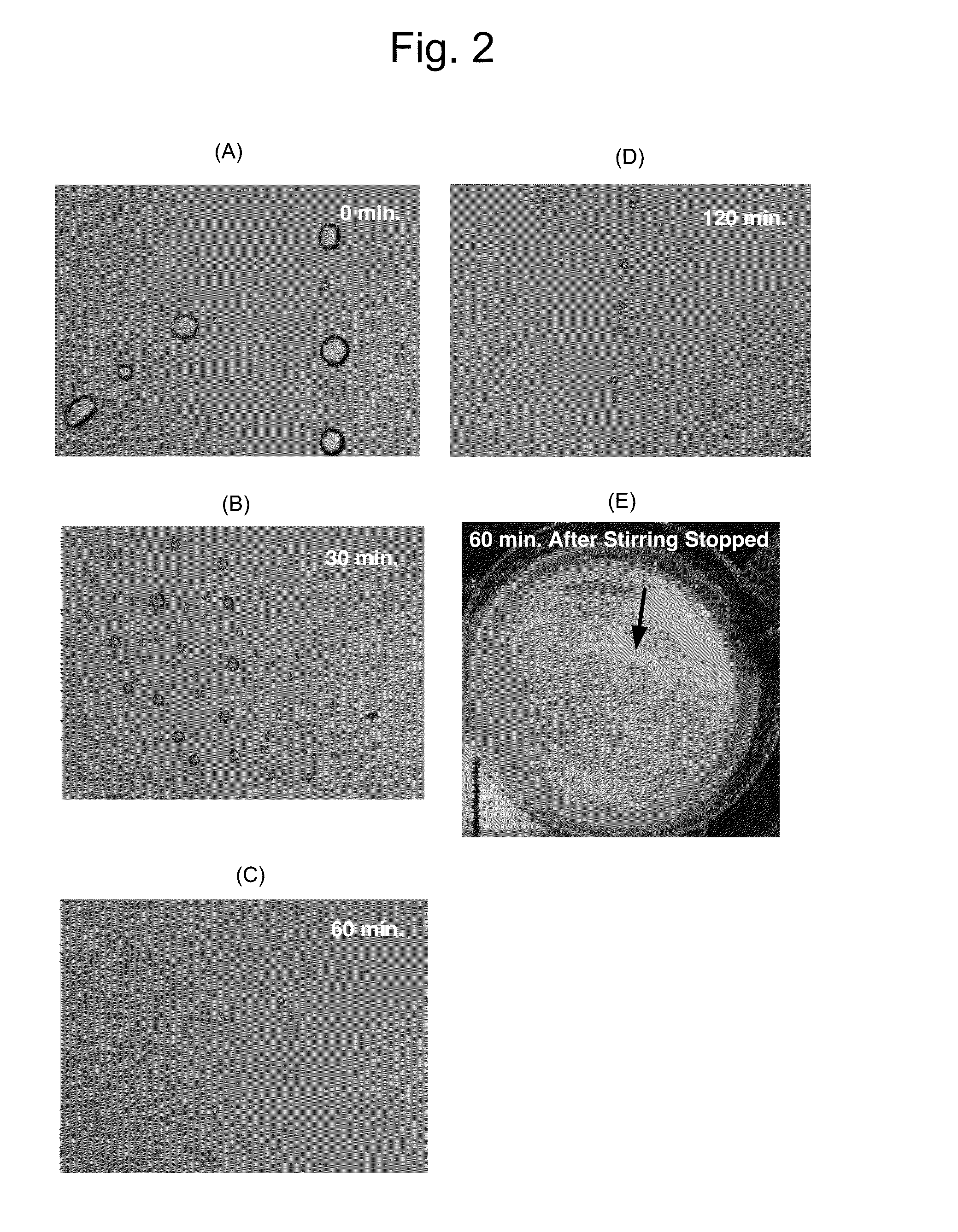Microbial flora activator and its use in treating wastewater containing oil and fat
a technology of microbial flora and activator, which is applied in the direction of biological water/sewage treatment, sustainable biological treatment, and detergent compounding agents, etc. it can solve the problems of affecting the efficiency of decomposition efficiency of microorganisms fixed to the carrier, and affecting the treatment effect of wastewater, etc. , to achieve the effect of reducing the amount of scum, suppressing the adhesion of deposition, and reducing the amount of s
- Summary
- Abstract
- Description
- Claims
- Application Information
AI Technical Summary
Benefits of technology
Problems solved by technology
Method used
Image
Examples
example 1
[0105]Investigation of composition of microbial flora activator
[0106]Components can be used as a microbial flora activator was studied. Compositions shown in the following Tables 1 and 2 were prepared by mixing 0.056% polyoxyalkylene alkylether or polyoxyalkylene with water, and a diameter of dispersed particles of oil and fat and properties such as an affinity for flocking, re-bonding (recombining) property, dispersion rate were studied. Results are shown in the Tables 1 and 2.
[0107]In Table 1 and Table 2, *1 to *5 are as follows.
[0108]1: polyoxypropylene alkylene-ether
[0109]2: POATED: polyoxyalkylene tridecylether[0110]OcDd: polyoxyalkylene octyldodecylether[0111]IsSe: polyoxyalkylene isocetylether[0112]DeTd: polyoxyalkylene decyltetradecylether[0113]TrDe: polyoxyalkylene tridecylether[0114]O1: polyoxyalkylene oleylether[0115]Bh: polyoxyalkylene behenylether[0116]Ar: polyoxyalkylene alkylether[0117]OA: polyoxyalkylene oxyalkylene-ether[0118]POAD: polyoxyalkylene decylether[0119]PO...
example 2
Dispersion Test of Oil and Fat
(1) Materials and Methods
[0126]To 1 L of tap water, lg of salad oil (manufactured by Nisshin Oillio Group, Ltd.) and 1 mL of the composition of the Example 7 of the present invention was added in a beaker. A stirring bar was dropped into the beaker and stirred at 500 rpm, the salad oil was dispersed and emulsified to prepare. Instead of the composition of the Example 7 of the present invention, XL-70 (manufactured by Daiichi Kogyo Co., Ltd., the comparative Example 1), DAPE-0220 (manufactured by Nihon Emulsion Co., Ltd., the comparative Example 3), OD-10 (manufactured by Nihon Emulsion Co., Ltd., the comparative Example 6), or TD-80 (manufactured by Nihon Emulsion Co., Ltd, the comparative Example 11) were used, and stirred similarly as the sample 1, and control samples 1 to 4 were prepared.
(2) Measurement Items and Method of Measurement
[0127]For the sample 1, and the controls 1 to 4, their dispersion states were observed by using the microscope (×100 m...
example 3
Water Quality Change in Raw Water Equalizing Tank in the Food Factory 1
(1) Measured Samples and Measurement Items
[0135]By using a ladle, 4 L of a liquid was dipped up from the raw water equalizing tank during aeration and stirring, before adding the microbial flora activator of the present invention to the tank in the food factory, and at a time point after 20 days from the start of addition of the activator to measure items shown in the following Table 3. An added amount of the microbial flora activator to the raw water equalizing tank against that of the wastewater inflow was 0.001%. A retention time of the sewage water in the raw water equalizing tank was 18 hours. Any floatation equipment was not used.
TABLE 3MeasurementSampling dateitemsBefore addition20 days after additionWater temperature147.5(° C.)pH5.14.5SS (mg / L)770(100)435(56.5)n-Hex (mg / L)66.4(100)7.9(11.9)BOD-5 (mg / L)1520(100)790(52.0)BOD-20 (mg / L)2690(100)1280(47.6)
[0136]In the Table 3, figures in brackets indicate perc...
PUM
| Property | Measurement | Unit |
|---|---|---|
| concentration | aaaaa | aaaaa |
| concentration | aaaaa | aaaaa |
| density | aaaaa | aaaaa |
Abstract
Description
Claims
Application Information
 Login to View More
Login to View More - R&D
- Intellectual Property
- Life Sciences
- Materials
- Tech Scout
- Unparalleled Data Quality
- Higher Quality Content
- 60% Fewer Hallucinations
Browse by: Latest US Patents, China's latest patents, Technical Efficacy Thesaurus, Application Domain, Technology Topic, Popular Technical Reports.
© 2025 PatSnap. All rights reserved.Legal|Privacy policy|Modern Slavery Act Transparency Statement|Sitemap|About US| Contact US: help@patsnap.com



